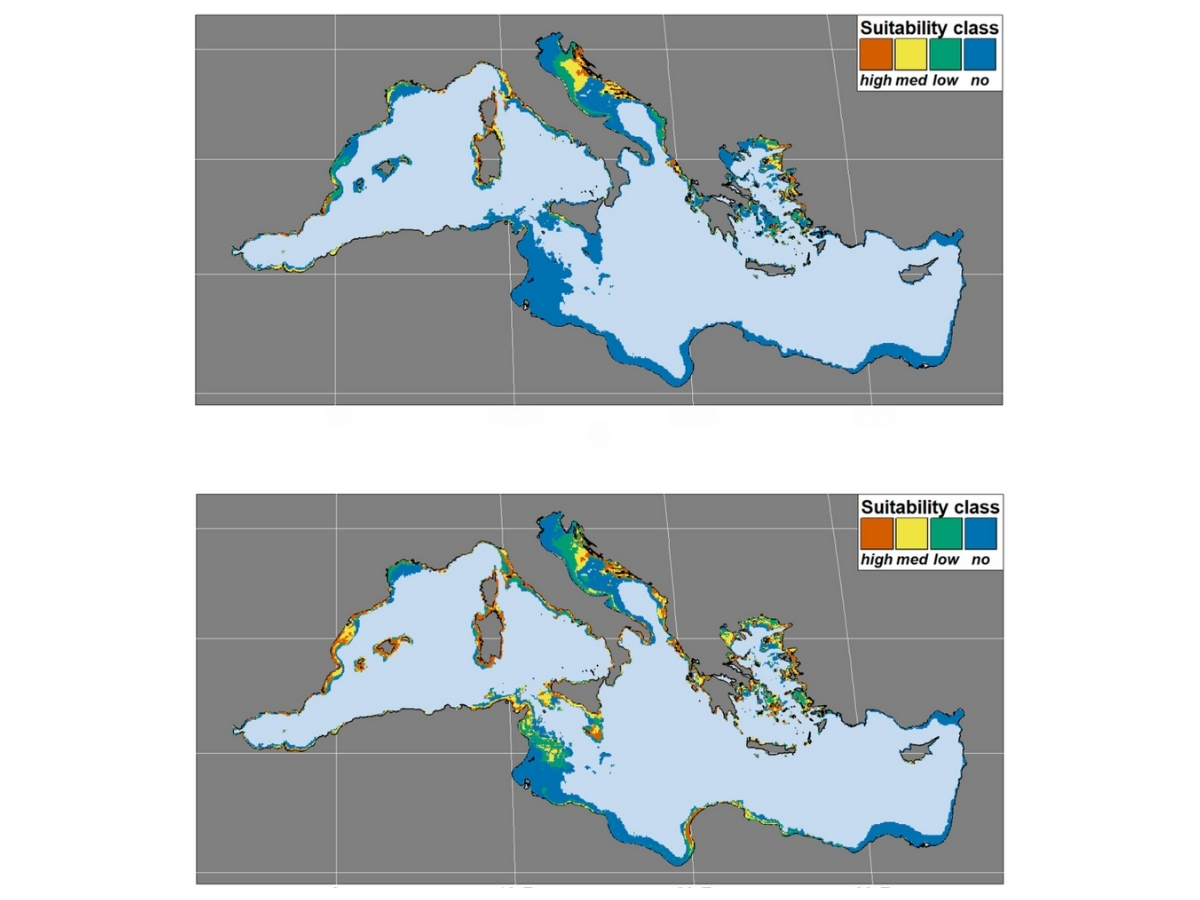
New study by OGS boosts accuracy in forecasting the spread of marine invasive species
The Mediterranean Sea is currently experiencing the spread of a highly invasive marine alga called Caulerpa cylindracea, a species that is originally from southern Australia. It competes with native benthic vegetation, disrupts food webs and reduces biodiversity in coastal seabed ecosystems. This alga is particularly prevalent in Posidonia oceanica meadows and coastal areas, where it finds favourable conditions for colonisation — partly due to strong human interference.
Identifying the areas where this alga may settle in the future is crucial for implementing effective and targeted control measures. A recent study, published in the journal Ecological Solutions and Evidence by a group of researchers from the OGS (Marco Fianchini, Cosimo Solidoro, and Donata Canu), proposes a methodological innovation to meet this challenge.
The team developed an advanced predictive model that yielded results more consistent with real-world observations. The model is based on MaxEnt, a widely used tool for estimating the potential distribution of a species based on its environmental preferences. While MaxEnt is an effective tool, it is important to note that it has some key structural limitations. These include sensitivity to sampling bias (the risk that data collection is uneven, often skewed towards easily accessible areas), researcher subjectivity in selecting environmental variables, uncertainty in results, and the risk of overfitting (i.e. a model that relies too heavily on training data, limiting its ability to generalise).
The new approach developed by the OGS research team is highly innovative in that it integrates multiple methodologies in a cohesive way. This allows it to avoid redundancies, ensure the ecological relevance of each factor, always select the best possible model, and calculate the presence of the alga while also accounting for multiple variables (ranging from climate change to seafloor substrate types).
When applied to the case of Caulerpa cylindracea in the Mediterranean, this new methodology identified key hotspots for diffusion, mainly along coastal zones — and especially in degraded areas as well as near urban settlements. This is in contrast to traditional models, which tend to indicate vast offshore areas as potentially suitable for colonisation by alien species.
The methodology is open-source and available on GitHub, offering a transparent, replicable, and adaptable tool for other ecological contexts. Its versatility means it can be applied not only to other marine alien species but also to freshwater or terrestrial environments.
As climate change amplifies the impact of biological invasions, accurate predictive tools are essential for preventing and managing these phenomena effectively when necessary. Consequently, the methodology developed by the researchers at OGS is expected to be further expanded in the near future to encompass other invasive species, across various marine and terrestrial ecosystems. Future developments will also take into account factors related to human pressure (e.g. maritime traffic as a carrier of alien species) as well as environmental vulnerability.
--------------
The research was funded by the National Biodiversity Future Center (NBFC), a project of the National Recovery and Resilience Plan (PNRR), Mission 4 "Education and Research", Component 2 "From Research to Business", Investment 1.4 "Enhancement of research facilities and creation of national R&D champions" in certain Key Enabling Technologies (National Centers).
